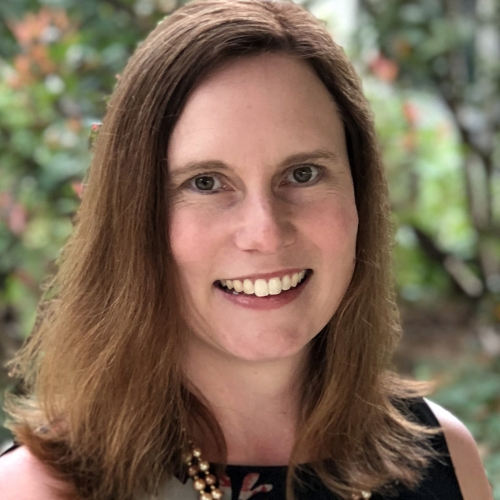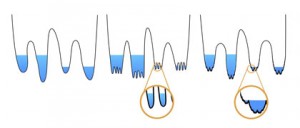I got a February 4, 2022 notice via email that three SFU Science events are planned over the next several weeks.
Nobel Lectures
From the February 4, 2022 SFU Science notice,
Nobel Lectures
Wednesday February 16, 2022, 5:00-7:00 pm [PST] via live stream
Celebrate the 2021 Nobel awardees with us as our faculty members present the awardees’ work as it relates to their own research. Rob Britton from Chemistry, Edgar Young from Molecular Biology and Biochemistry and Kirsten Zickfeld from Geography [likely acting as the host/interviewer] will present at this year’s event.
Register here.
I found some information about the SFU presenters and the work being recognized on the SFU Nobel Prize Lectures 2022 eventbrite webpage,
Dr. Robert Britton completed his PhD at UBC with Professors Edward Piers and Raymond Anderson in 2002 studying natural product isolation and synthesis, and was then an NSERC [Natural Sciences and Engineering Research Council of Canada] Postdoctoral Fellow in Cambridge working with Professor Ian Paterson on the synthesis of structurally complex marine natural products. He then joined the Merck Process Chemistry Group in Montreal before beginning his independent research career at Simon Fraser University in 2005. He is currently a Professor at SFU and his research program focuses on reaction discovery, natural product synthesis, medicinal chemistry and radiopharmaceutical chemistry.
Topic: The catalysis of chemical reactions has historically relied on expensive and often low-abundance metals such as gold, palladium and platinum. The discovery that inexpensive and naturally occurring organic molecules can catalyze the same reactions has caused a paradigm shift that has led to more environmentally friendly and economic processes, and served as an enabling tool for scientific discoveries.
Dr. Edgar Young is an Associate Professor in the Department of Molecular Biology & Biochemistry at SFU. His research lab investigates ion channel proteins that switch their structure in response to electrical and chemical signals, producing complex behaviour in the cardiac and nervous systems.
Topic: The 2021 Nobel Prize in Physiology and Medicine was awarded to David Julius and Ardem Patapoutian, for their discovery of key molecules in our nervous system that enable our sense of touch. In this talk, we’ll see how these molecules called ion channels work as electrical switches to convey sensations of pressure, pain, heat and cold — and we’ll explore the prospects for medical benefit.
From Nobel Prize Lectures 2021:
The Nobel Prize in Physics 2021 was awarded “for groundbreaking contributions to our understanding of complex systems” with one half jointly to Syukuro Manabe and Klaus Hasselmann “for the physical modelling of Earth’s climate, quantifying variability and reliably predicting global warming” and the other half to Giorgio Parisi “for the discovery of the interplay of disorder and fluctuations in physical systems from atomic to planetary scales.”
https://www.nobelprize.org/prizes/physics/2021/summary/
The Nobel Prize in Physiology or Medicine 2021 was awarded jointly to David Julius and Ardem Patapoutian “for their discoveries of receptors for temperature and touch.”
https://www.nobelprize.org/prizes/medicine/2021/summary/
The Nobel Prize in Chemistry 2021 was awarded jointly to Benjamin List and David W.C. MacMillan “for the development of asymmetric organocatalysis.”
SFU Café Scientifique for February and March 2022
From the February 4, 2022 SFU Science notice,
February 17 & March 24 via Zoom
Engage with award-winning researchers from SFU Science for a series of informal discussions connecting research to important issues of interest to the community.
Aging actively: Why choose to move?
Thursday February 17, 2022, 5:00-6:30 pm
Dr. Dawn Mackey, SFU Biomedical Physiology and Kinesiology
Discover the benefits of regular movement for older adults, explore what they want out of physical activity and find out how to create sustainable habits.
Register here.
[from the eventbrite registration page,
Choosing to move can be as simple as moving more, and moving more often – it doesn’t have to mean going to the gym. In this interactive cafe, Dr. Dawn Mackey from SFU’s Biomedical Physiology and Kinesiology Department will explain the benefits of regular physical activity for older adults, as well as some risks of not being active enough. We will also explore what older adults want to get out of physical activity, and ways to make physical activity a sustainable habit.]
From the South Pole to the edge of the universe, and back to the coast of British Columbia
Thursday March 24, 2022, 5:00-6:30 pm
Dr. Matthias Danninger, SFU Physics
Learn about neutrinos and how British Columbia may soon hold a dominant role in neutrino astronomy.
[from the eventbrite registration page:
What is a neutrino? What can we learn from neutrinos about the Universe? Dr. Matthias Danninger from the Department of Physics will discuss answers to these questions and how British Columbia could play a dominant role for neutrino astronomy in the near future.]
Register here.
Hmmm
I have some comments about both SFU Café Scientifique presentations.
With regard to the “Aging actively: Why choose to move?” event in February 2022, it seems to be oriented to students, i.e., future gerontologists and other professionals focused on geriatrics. I can’t help but notice that the presenter (assuming this photo is relatively recent) is not any danger of being described as aged or as a senior,

There is nothing inherently wrong with having a youngish professional share work focused on seniors. The problem lies in the fact that presenters for events/talks/conferences/etc. on older folks are almost always young or youngish. I expect that as these professionals age they will find they are no longer participants in the conversation but the objects of the conversation.
As for “From the South Pole to the edge of the universe, and back to the coast of British Columbia,” this claim seems a little optimistic, “… British Columbia may soon hold a dominant role in neutrino astronomy.”
The centre for neutrino and dark matter physics in Canada is the SNOLAB. (There was a talk about the work at the lab in my June 6, 2019 posting Whispering in the Dark: Updates from Underground Science a June 12, 2019 talk in Vancouver …, another mention of the lab in May 12, 2021 posting about a former SNOLAB executive director, TRIUMF [Canada’s national particle accelerator centre] welcomes Nigel Smith as its new Chief Executive Officer (CEO) on May 17, 2021and …, and, most recently, a September 6, 2021 posting about an art/science exhibit where SNOLAB was a partner, ‘Drift: Art and Dark Matter’ at Vancouver’s … .)
British Columbia will soon be dominant? There was this in 2015 (from the SNOLAB’s Awards and Recognition webpage),
The 2015 Nobel Prize in Physics
2015-10-06
Arthur B. McDonald was co-awarded the 2015 Nobel Prize in Physics with Takaaki Kajita for the contributions of the Sudbury Neutrino Observatory Collaboration and Super-Kamiokande Collaboration for the discovery of neutrino oscillations, which shows that neutrinos have mass. The discovery changed our understanding of the innermost workings of matter and proves crucial to our view of the universe.
While I have doubts about the stated goal of being dominant soon, I look forward to being proved wrong. If that happens.
